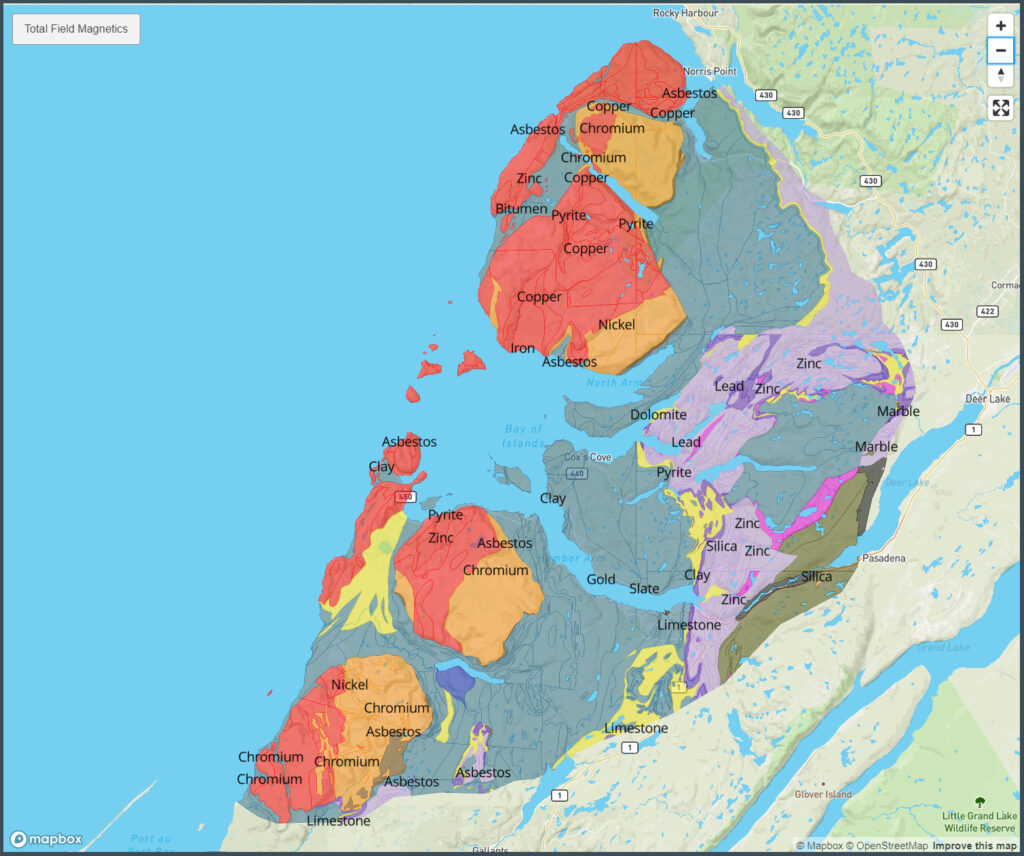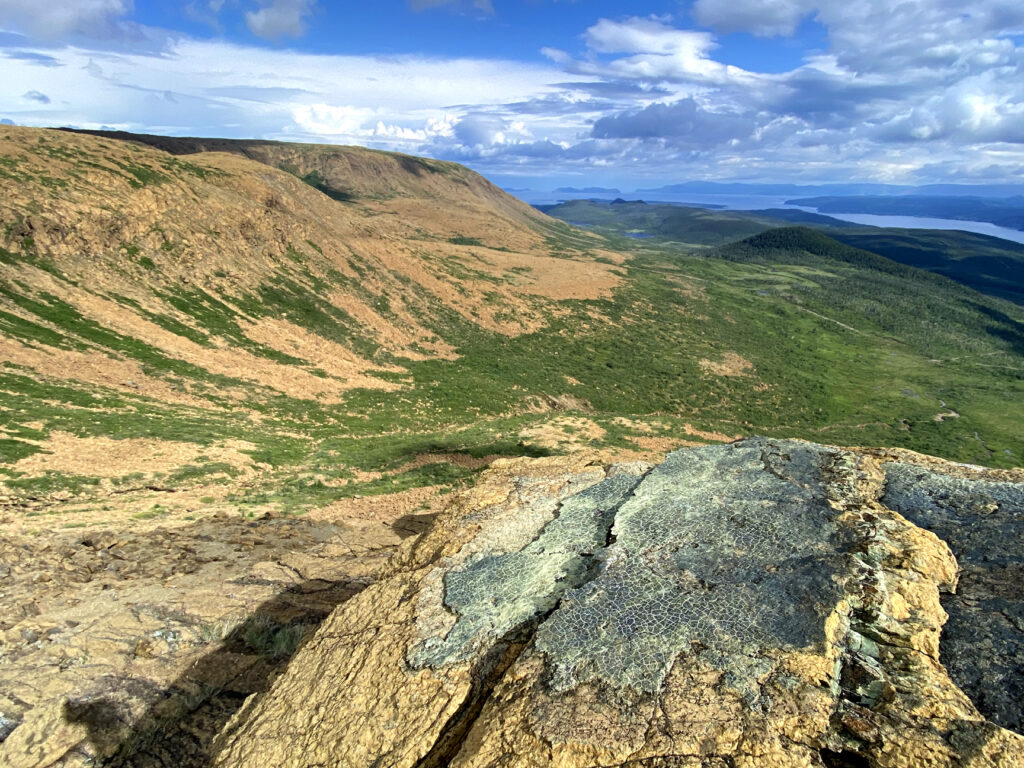Cabox Aspiring Geopark is located on the west coast of Newfoundland, south of Gros Morne National Park of Canada (Figure 1.1). Gros Morne was established in part due to its remarkable geological heritage. The Cabox Park area shares the same heritage, but includes some additional geological components that are not as easily seen in Gros Morne National Park. Both park areas form part of the Appalachian mountain chain which is generally considered to include all of Newfoundland (geologically speaking) even though high-elevation hill country is large within the Long Range Mountains, on the island’s west coast (Figure 1.1). The definitive source for much of the descriptive information about Newfoundland geology is the Decade of North American Geology (DNAG) synthesis by Harold (Hank) Williams (1995), but some new ideas have arisen in the 21st century.
Cabox Geopark - Geology
To geologists, the Appalachians are one part of an enormous mountain chain (an ‘orogenic belt’) formed between late Precambrian times (~ 700 million years ago) to mid-Paleozoic times (~ 320 million years ago), by the sequential collision of various continental blocks represented now by parts of North America, Europe and Africa. This ended with the assembly of Pangaea, the most recent of many supercontinents now recognized in Earth’s long history. Pangaea, meaning “all land”, was short-lived (geologically speaking) as it began to break apart and disperse again about 250 million years ago (250 Ma), eventually giving us our familiar map of the world, with its eight dispersed continents. The process of continental drift, leading to geological processes that are part of Global Tectonics, is a long-lived feature of our planet. Orogenic Belts, or Orogens, are regions that were affected by compressive forces for long periods, causing long-lived folding, faulting, metamorphism, and igneous activity. In most cases, these processes ended when ancient continental blocks collided (as India ‘recently’ collided with Asia), during the assembly or growth of continents. The early histories of orogenic belts are dominated by the accumulation of marine sedimentary rocks, deposited within and around ocean basins that no longer exist. Oceans may seem permanent to us, but they are actually transient features of the Earth’s surface, being created and destroyed by global tectonics. The Appalachian Orogen is a continuation of a well-known mountain belt in western Europe, which is known as the Caledonian Orogen (after the Roman name for Scotland).
The geology of Newfoundland actually has very close parallels with that of the British Isles. The Appalachian-Caledonian Orogen records the formation and destruction of two ancient oceans known as the Iapetus Ocean and the Rheic Ocean. These vanished oceans were precursors to the modern Atlantic Ocean, which is young by comparison (it only formed since about 200 million years ago). The Iapetus and Rheic oceans were destroyed as the surrounding continents closed together to create Pangaea, much as the present-day Pacific Ocean is shrinking, generating active orogenic belts around its margins. During the later breakup of Pangaea, the Appalachian-Caledonian Orogen was broken apart into a European section (in the British Isles and Scandinavia) and a North American section (the Appalachians of Canada and the USA, and parts of eastern Greenland), separated by the modern Atlantic Ocean. The principal elements of the Appalachian Orogen are shown in Figure 1.2, which is actually a paleomap, i.e., it shows the geology as envisaged prior to the opening of the modern Atlantic Ocean. The line along which the modern Atlantic opened is sinuous, and it crossed the ‘trend’ of the Appalachian-Caledonian Orogenic Belt somewhere between Newfoundland and Ireland (Figure 1.2). In the 1960s, long-held concepts in geology were completely revolutionized by the recognition of continental drift and global plate tectonics. The Appalachian region – notably Newfoundland – became a laboratory in which this new paradigm was successfully tested. Newfoundland is often labelled as the type area for the Appalachian Orogen, because it preserves the best-exposed and most complete cross-section. Western Newfoundland is part of North America and always has been so, but eastern Newfoundland was originally part of Europe or North Africa, and was left attached to North America when the modern Atlantic Ocean opened. The famous geophysicist J. Tuzo Wilson (known as one of the originators of global tectonic concepts) first coined the term proto-Atlantic Ocean in 1966 for the vanished ocean that we now call the Iapetus Ocean. Figure 1.3a shows the configuration of familiar geographic areas during the Ordovician Period, about 500 million years ago; note that some areas that are now on one side or another of the modern Atlantic Ocean were originally separated by the Iapetus Ocean.





